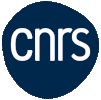Highlights of SPINTEC research in 2020 (December 10th, 2020)

The research highlights of SPINTEC over the year 2020 have been put together, and are available to download: https://www.spintec.fr/spintec-annual-booklets. This booklet contains the key facts of the lab over the period (contracts, new staff etc.), the most up-to-date description of the lab activity and the research teams. We wish you a nice reading!
Read morePost-doctoral position – Spintronic Spiking Neurons (December 07th, 2020)

In the frame of the French national ANR project SpinSpike, Spintec laboratory is opening a postdoctoral researcher position. The candidate will work in collaboration with UMPhy CNRS-Thales and Thales TRT. The objective is the realization of proof-of-concept magnetic tunnel junction based artificial spiking neurons able to generate spikes and propagate them between coupled artificial neurons. […]
Read morePhD defense – Memristive magnetic memory for spintronic synapses (December 07th, 2020)

On Thursday, December 17, 2020 at 13H30, Marco Mansueto will defend his PhD entitled: Memristive magnetic memory for spintronic synapses Video conference: https://grenoble-inp.zoom.us/j/96102161721 [Meeting ID : 961 0216 1721; Passcode : MM] Abstract : In the context of a technological era in which the amount of data is exponentially increasing, the development of brain-inspired softwares […]
Read moreSOFT – ERC Proof of Concept grant (November 24th, 2020)

Non-volatility is the main physical feature that fast memories, such as SRAM, are still lacking. Such memories could increase computing performance while reducing significantly the power consumption. The only viable option for sub-ns nonvolatile memory is the Spin-Orbit Torque Magnetic Random Access Memory (SOT-MRAM). The main roadblock towards the integration of the SOT-MRAM is that […]
Read morePushing the limits of fast swept-tuned spectrum analysis using Spin-Torque Nano-Oscillators (November 16th, 2020)

Recent progress in nanotechnology has led to the development of spin-torque nano-oscillators (STNO), whose time constants, due to their nano-scale size, are naturally of the order of 1-100 nanoseconds. At SPINTEC we demonstrated experimentally for the first time that the use of such STNOs in swept-tuned microwave spectrum analyzers leads to a substantial reduction of […]
Read moreUnveiling the heart of magnetic memory cells thanks to electron holography (November 10th, 2020)

Magnetic spintronic memory called STT-MRAM have recently entered in volume production at major microelectronic foundries. The research in this area is now focused on preparing the future memory generations with higher capacity, higher speed, lower power consumption, wider range of operating temperature. To conduct this type of research, it is important to be able to […]
Read moreseminar – Skew scattering and the spin Hall effect in cooperatively ordering magnetic systems (November 06th, 2020)

On November 16 at 14:00, Timothy Ziman from Institut Laue Langevin Theory Group will give us an on-line seminar entitled : Skew scattering and the spin Hall effect in cooperatively ordering magnetic systems Link to the seminar using Skype Meeting or in case of failure or with mobilephone Skype Web App The spin Hall effect […]
Read moreMAGALIGN – ERC Proof of Concept grant (October 28th, 2020)

ERC Proof of Concept grant MAGALIGN is awarded in the framework of ERC Project MAGICAL The launching of a new generation of spintronic memory (STT-MRAM) in volume production in 2019 by all major microelectronics companies marks the adoption of spintronics by microelectronics industry. This constitutes a major milestone in the field. SPINTEC largely contributed to […]
Read morePost-doctoral position – Electrical control of magnetic skyrmions (September 29th, 2020)

Spintec invites application for postdoctoral positions in spintronics on electrical control of magnetic skyrmions. Magnetic skyrmions are nontrivial spiral spin textures considered as potential building blocks for ultrafast and power efficient spintronic memory and logic devices. Controlling their chirality would provide an additional degree of freedom and enable new functionalities in these devices. Achieving such […]
Read moreSOT-MRAM Pioneer Antaios Secures $11M in Funding (September 25th, 2020)

Antaios announced on September 16, 2020 that is has secured 11 million dollars in funding to accelerate innovation and develop new strategic partnerships. Antaios is a start-up founded in 2017 on the basis of a decade of pioneering work carried out at Spintec on SOT-MRAM. Antaios is fully engaged in bringing the SOT-MRAM technology to […]
Read more



